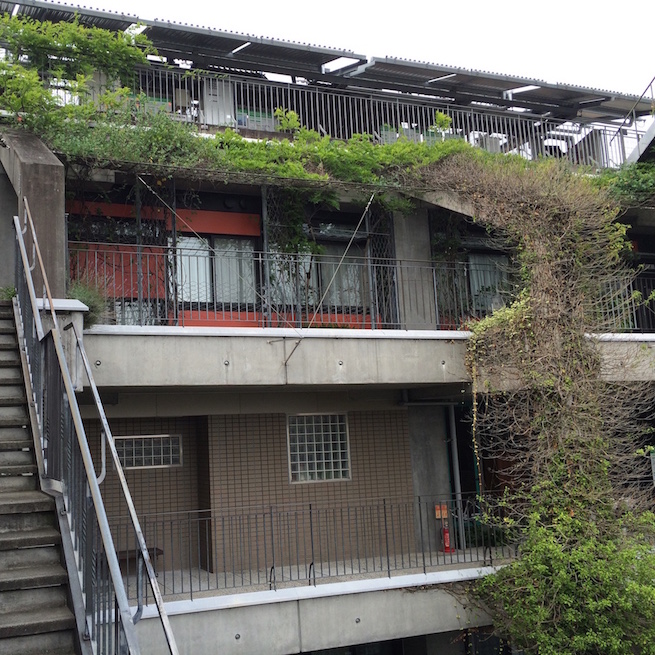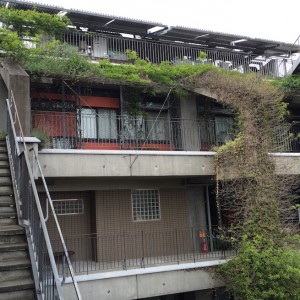 Do you also have a wish list of things that you really want to see with your own eyes and experience up close, because you have already heard and read so much about it? My list has long included a visit to the building NEXT21 in Japan.
Do you also have a wish list of things that you really want to see with your own eyes and experience up close, because you have already heard and read so much about it? My list has long included a visit to the building NEXT21 in Japan.
The apartment building in the city of Osaka with live experiments in the field of lay out, life cycle, recycling, energy and climate. I see NEXT21 as a great example of how much room Open Building offers to new developments and changing needs of residents. How a utility company is looking decades ahead! Would you like to take a look with me here? Please read on…
From nuclear energy back to gas (say what?)
Because of the known problems with nuclear power plants, the accident and its closures, there is a long term shortage of electricity. As a result social resistance arose against the use of electricity and now Japanese sometimes go back to gas as fuel. This is in contrast to the Netherlands, a gas country par excellence, where they want to use less or no gas, also when cooking, because of reducing remaining supply and the earthquakes it provokes in the extraction area of the province of Groningen.
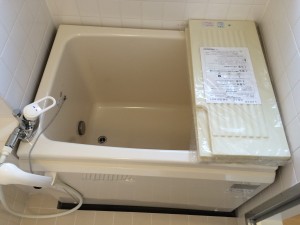 Looking at energy saving, reducing energy costs related to water consumption turned out to be most urgent in Tokyo. The reason for this is another Japanese tradition: bathing. A typical Japanese bathroom has a soaking tub and also a shower in the running of the bath. Japanese shower first and then step into the hot bath clean. The warm water is subsequently used by the whole family. The traditional order is father first, then the children and then mother. Not a lot of water is lost in this manner, and an insulating cover on the tub keeps the water warm between bathers. However, some families do spend a third of their energy on this bath. For the ladies sometimes step into the tub up to five times a day and of course the water has to stay warm!
Looking at energy saving, reducing energy costs related to water consumption turned out to be most urgent in Tokyo. The reason for this is another Japanese tradition: bathing. A typical Japanese bathroom has a soaking tub and also a shower in the running of the bath. Japanese shower first and then step into the hot bath clean. The warm water is subsequently used by the whole family. The traditional order is father first, then the children and then mother. Not a lot of water is lost in this manner, and an insulating cover on the tub keeps the water warm between bathers. However, some families do spend a third of their energy on this bath. For the ladies sometimes step into the tub up to five times a day and of course the water has to stay warm!
Make Heat and electricity generation and exchange locally!
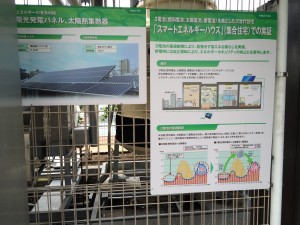 So it makes perfect sense to look at all kinds of sustainable ways to heat water and keep it warm. A combination of PV cells and solar collectors on the roof are a familiar combination. PV cells provide electricity and collectors heat. Japan is looking into the option to centrally gas heat the warm water supply of complete apartment buildings, instead of per home. Furthermore, water heating with electricity in the kitchen like the quooker we use in the Netherlands, is still totally unknown in Japan, but could be an option for the small and irregular hot water use in kitchens during the day.
So it makes perfect sense to look at all kinds of sustainable ways to heat water and keep it warm. A combination of PV cells and solar collectors on the roof are a familiar combination. PV cells provide electricity and collectors heat. Japan is looking into the option to centrally gas heat the warm water supply of complete apartment buildings, instead of per home. Furthermore, water heating with electricity in the kitchen like the quooker we use in the Netherlands, is still totally unknown in Japan, but could be an option for the small and irregular hot water use in kitchens during the day.
Energy saving or transforming?
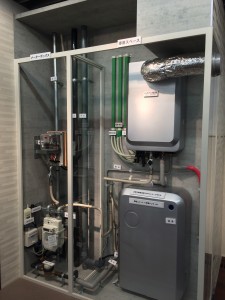
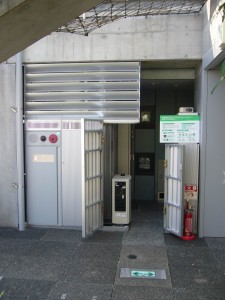 What more have we discovered in the field of energy? In Tokyo and further south double glazing has only been used a few years and then mainly in new buildings. It still is not a legal requirement to do so. When building costs need to be reduced, double glazing is the first cut back. I did not see much of renovation to save energy in the façade, only on the inside behind the exterior finish of the façade you will find a four cm added now. That surprised me because the four centimeters insulation that is now standard in Japan, both in new construction and renovation, is not much when comparing to Middle and Northern Europe. In the Netherlands we have these thickness requirements introduced in 1976 and they are now four times higher. Of course the difference in climate explains a lot. In central and southern Japan where I traveled, it’s warmer in the summer than in the Netherlands. In winter the temperature drops to around freezing. In the Netherlands we use -10°C as a starting point for winter calculation. Therefore in Japan the heating and cooling is often combined in the air conditioning, which runs on electricity. Maybe it’s different in the north of Japan. Only we have not been there, although we will be happy to receive any information on that.
What more have we discovered in the field of energy? In Tokyo and further south double glazing has only been used a few years and then mainly in new buildings. It still is not a legal requirement to do so. When building costs need to be reduced, double glazing is the first cut back. I did not see much of renovation to save energy in the façade, only on the inside behind the exterior finish of the façade you will find a four cm added now. That surprised me because the four centimeters insulation that is now standard in Japan, both in new construction and renovation, is not much when comparing to Middle and Northern Europe. In the Netherlands we have these thickness requirements introduced in 1976 and they are now four times higher. Of course the difference in climate explains a lot. In central and southern Japan where I traveled, it’s warmer in the summer than in the Netherlands. In winter the temperature drops to around freezing. In the Netherlands we use -10°C as a starting point for winter calculation. Therefore in Japan the heating and cooling is often combined in the air conditioning, which runs on electricity. Maybe it’s different in the north of Japan. Only we have not been there, although we will be happy to receive any information on that.
What about Holland or other countries?
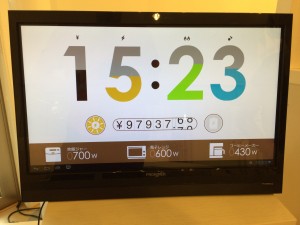 So Japanese legislation about building and fit-out takes individual housing needs as the starting point. That gives Japanese maximum freedom to live as they wish indoors. All laws in the Netherlands and most other countries are based on “theory” and “standard” living behavior, for example translated into energy consumption. This image divides into money, electricity, gas and water and it shows reality. We all know that the reality is different from theory, which is never a standard fit and certainly gives no freedom. With a city of Amsterdam having citizens in over 180 nationalities a one-size-fits-all application is even socially irresponsible, don’t you think? If you do want to gain maximum freedom in living, then suppliers have to examine and understand what you need. In Japan, suppliers have already learned how to respond to individual requirements. This leads to innovations and affordable industrial customization. You get delivered what you expect. A durable housing product that responds to your needs with a long warranty. Imagine the Dutch building industry functioning like the one in Japan.
So Japanese legislation about building and fit-out takes individual housing needs as the starting point. That gives Japanese maximum freedom to live as they wish indoors. All laws in the Netherlands and most other countries are based on “theory” and “standard” living behavior, for example translated into energy consumption. This image divides into money, electricity, gas and water and it shows reality. We all know that the reality is different from theory, which is never a standard fit and certainly gives no freedom. With a city of Amsterdam having citizens in over 180 nationalities a one-size-fits-all application is even socially irresponsible, don’t you think? If you do want to gain maximum freedom in living, then suppliers have to examine and understand what you need. In Japan, suppliers have already learned how to respond to individual requirements. This leads to innovations and affordable industrial customization. You get delivered what you expect. A durable housing product that responds to your needs with a long warranty. Imagine the Dutch building industry functioning like the one in Japan.
Take the next step and share your experiences
Do you want to take a next step? Come to the FREE* Masterclass. We will work with practical tools to instantly implement the actions of my ebook in your organizational, fiscal or financial projects and organization.
Join the conversation
Do you know how to build that new way and what you need? To what energy performance would you like to hold the supplier of your house? Share it in the comments below.
To your health and wellbeing,
Remko Zuidema

